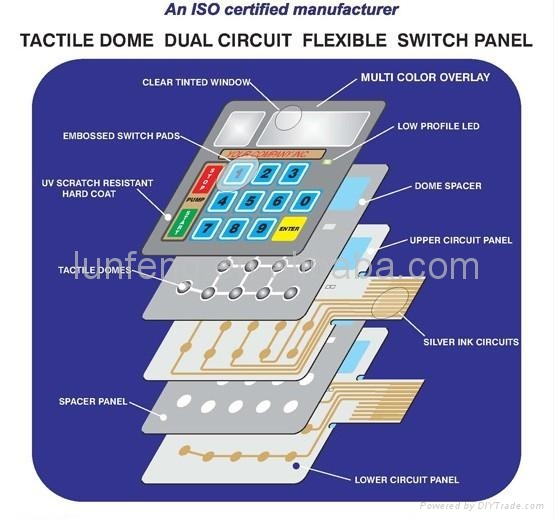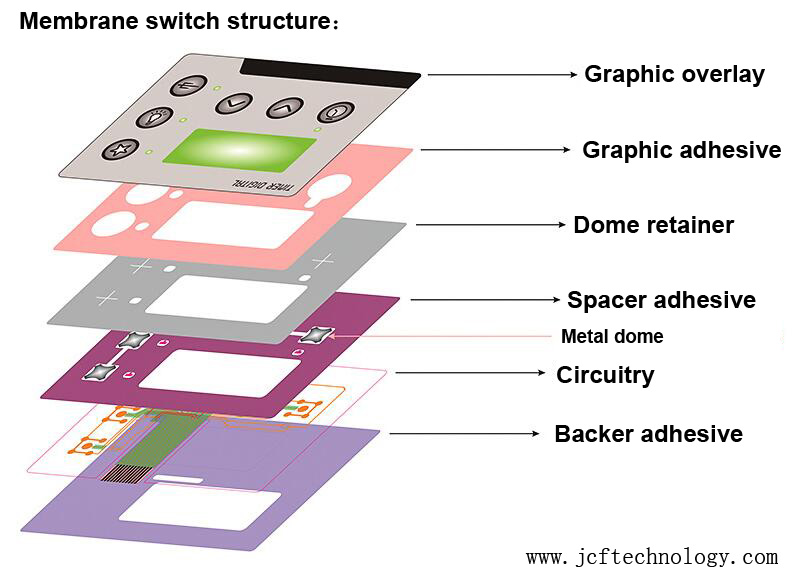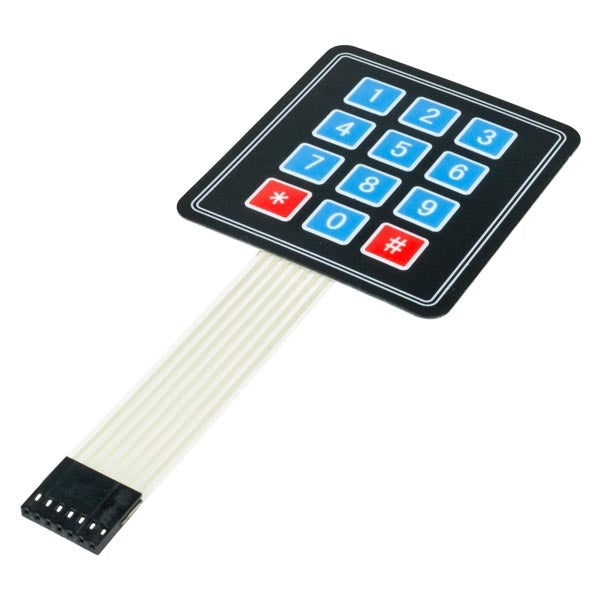The Role of Membrane Switches in Enhancing Device Functionality
The Role of Membrane Switches in Enhancing Device Functionality
Blog Article
Recognizing Membrane Switches Over: The Key to Dependable and sturdy Controls

What Are Membrane Switches?
Membrane layer buttons are an innovative remedy in the realm of interface innovation, integrating performance and layout flawlessly. These tools offer as a user interface between users and electronic systems, integrating several components into a compact format. Generally constructed from flexible, thin layers of materials, membrane buttons are designed to reply to touch, making it possible for customers to connect with equipment and digital tools properly.
The key components of a membrane layer button consist of a published circuit layer, visuals overlay, and a spacer layer that prevents unintended activation. The graphic overlay can be personalized to reflect brand identity or customer choices, improving appearances while making certain functionality. Membrane buttons are generally used in different applications, including clinical gadgets, consumer electronics, and commercial devices, owing to their sturdiness and resistance to environmental factors such as dampness and dust.
One of the vital advantages of membrane buttons is their capability to endure wear and tear, making them excellent for high-traffic atmospheres. Additionally, they are light-weight and need minimal room, permitting innovative layouts in item development. Generally, membrane changes stand for a functional and efficient selection for contemporary digital interfaces, weding technology with user-centric layout principles.
Just How Membrane Changes Job
The operation of membrane layer switches rest on a simple yet efficient mechanism that equates customer input into digital signals. These buttons consist of numerous layers, generally consisting of a visuals overlay, a spacer layer, and a circuit layer. When a user presses the button, the leading layer deforms, enabling a conductive component in the circuit layer to make contact with a matching conductive pad on the bottom of the graphic overlay. This get in touch with shuts the circuit and sends out an electronic signal to the gadget, showing that the button has been triggered.
The layout of membrane layer buttons can differ, but they commonly include domes or responsive components to provide feedback to the individual, improving the general experience - membrane switch. The products utilized in membrane layer buttons, such as polyester or polycarbonate, add to their longevity and resistance to environmental factors, including moisture and dust. The published circuits are commonly enveloped, which shields them from wear and tear over time.
Advantages of Membrane Layer Switches

Furthermore, membrane layer buttons are recognized for their longevity. Constructed from robust materials, they are resistant to dust, moisture, and physical wear, which considerably prolongs their life expectancy compared to conventional mechanical switches. This sturdiness makes them especially appropriate for high-traffic atmospheres and applications needing durability.
One more significant benefit is the ease of cleaning and upkeep. The smooth surface area of membrane layer changes lessens dust accumulation and is frequently impervious to spills, making them perfect for settings that call for regular sanitization.
Furthermore, membrane switches offer a structured account, causing a thinner design that can be incorporated into various devices without including bulk. This feature not just boosts the aesthetic appeal link yet additionally adds to a more ergonomic item style.
Applications of Membrane Buttons
Functional and easy to use, membrane layer switches locate applications across a broad array of markets, including clinical gadgets, customer electronic devices, and industrial tools. In the medical area, these switches are integral to gadgets such as diagnostic tools, client tracking systems, and mixture pumps, where reliability and convenience of cleaning are crucial. Their capacity to stand up to harsh settings and maintain capability makes them optimal for such great post to read applications.

In consumer electronic devices, membrane switches are made use of in products like microwaves, washing makers, and remote controls - membrane switch. Their smooth layout permits user-friendly customer interfaces, enhancing the general customer experience while providing toughness and resistance to wear and tear
Commercial tools also benefits from membrane switches, specifically in control panels for machinery and automation systems. These switches use defense against dust and wetness, making certain consistent performance in tough settings. Their personalized features enable suppliers to customize them to details functional needs, improving efficiency and functionality.
Picking the Right Membrane Switch Over
When choosing a membrane layer button, it is vital to think about different elements that influence performance and suitability for details applications. The key factors to consider consist of ecological conditions, tactile feedback, durability, and design requirements.
First, analyze the operating atmosphere; switches exposed to dampness, chemicals, or severe temperatures require details products to guarantee long life and performance. Next, review the requirement for tactile responses. Depending upon individual communication, some applications might benefit from a responsive action to confirm activation, while others might like a non-tactile design for visual reasons.
Durability is an additional important element; membrane layer switches need to be created to endure constant use, influences, and abrasion. Guarantee the picked switch can sustain the expected lifecycle, specifically in high-usage situations.

Final Thought
In conclusion, membrane layer changes serve as essential parts in the style of trustworthy and long lasting control systems across numerous industries. Their compact layout, combined with durable building and personalized functions, enhances individual interaction while making sure longevity sought after environments. The adaptability of membrane switches over enables tailored options that fulfill particular operational requirements, strengthening their value in contemporary try here technology. As sectors remain to advance, the importance of integrating efficient membrane layer switch remedies can not be overstated.
Membrane changes represent an essential aspect of contemporary user interface style, blending performance with strength in different applications.Membrane buttons are an advanced service in the realm of user interface innovation, incorporating capability and layout perfectly. Commonly created from flexible, slim layers of materials, membrane layer buttons are developed to respond to touch, allowing users to interact with equipment and digital tools properly.
The style of membrane buttons can vary, however they frequently incorporate domes or responsive components to offer responses to the customer, improving the general experience.In verdict, membrane layer switches over offer as essential components in the design of reputable and durable control systems across different sectors.
Report this page